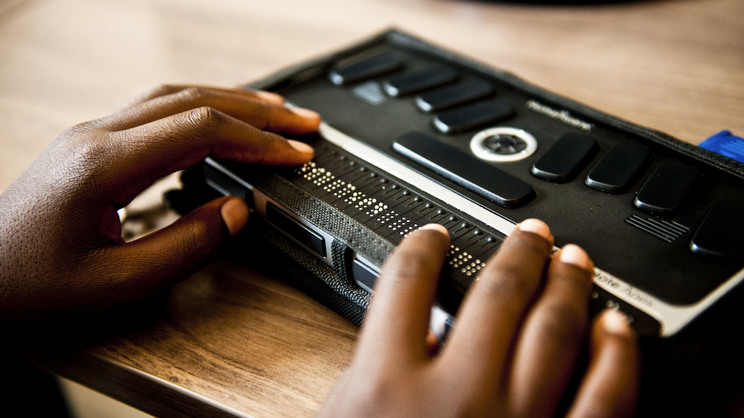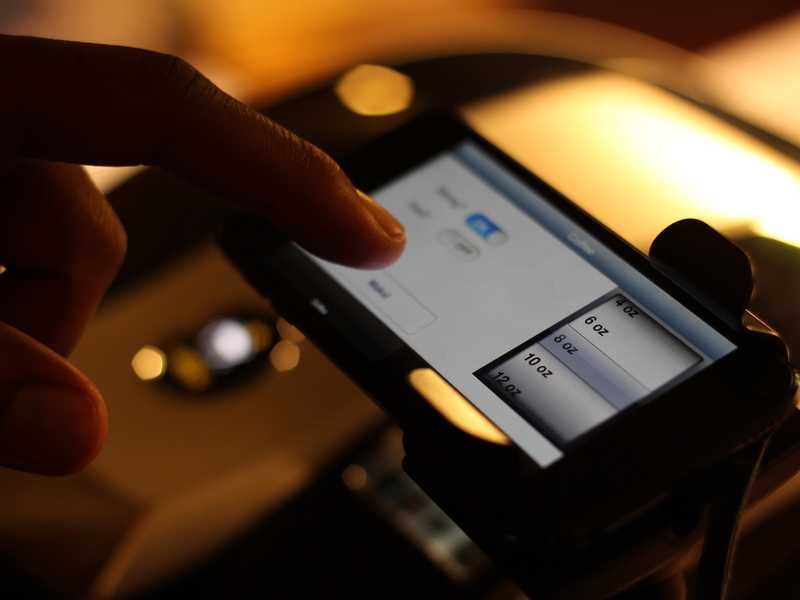Enhancing Lives With Advanced Assistive Instruments for the Blind
The assimilation of sophisticated assistive gadgets for the blind is transforming exactly how people experience their surroundings and interact with their areas. What does this evolution suggest for the future of assistive innovation and its role in equipping individuals?
Summary of Assistive Tools
Assistive tools for the blind encompass a diverse series of technologies and tools developed to enhance self-reliance and enhance the lifestyle for people with aesthetic problems. These gadgets deal with numerous needs, from navigating and flexibility to interaction and daily job management.
Among the key categories of assistive tools includes flexibility help, such as white canes and guide canines, which assist customers browse their surroundings safely. Electronic travel help, outfitted with sensors and audio feedback, also play a considerable function in flexibility improvement.
Furthermore, gadgets that assist with daily living tasks, such as flexible kitchen area tools, Braille tags, and chatting watches, equip people to perform tasks independently. Communication help, consisting of display visitors and Braille displays, promote access to info and allow individuals to involve effectively with the digital globe.
Furthermore, low-tech remedies like magnifying glasses and large-print materials remain essential for lots of individuals. Jointly, these assistive devices offer not just as practical devices but also as crucial enablers of autonomy, promoting better participation in a world that frequently prioritizes sighted experiences. Their integration into day-to-day live is essential for promoting inclusivity and improving overall health for those with aesthetic disabilities.
Cutting-edge Technologies in operation
Innovation in modern technology has actually considerably transformed the landscape of tools offered for individuals with visual problems. Among one of the most significant advancements are wise glasses incorporated with augmented fact, which give real-time navigation support and things recognition. These devices take advantage of advanced cams and expert system to supply acoustic cues, enhancing the user's spatial understanding and autonomy.
Furthermore, mobile applications have emerged as powerful sources, allowing customers to determine money, reviewed message aloud, and browse strange environments through verbal guidelines. Tools such as Braille displays and refreshable Braille gadgets continue to progress, offering seamless connectivity with computer systems and smart devices, thus enhancing communication and access to details.
Wearable technology, including smartwatches geared up with voice-activated attributes, further encourages customers by facilitating fast accessibility to notices and notifies without needing visual interaction. Tactile maps and 3D printing are also getting grip, providing tangible depictions of rooms that help in positioning and movement training.
Jointly, these ingenious modern technologies not just improve the every day lives of aesthetically impaired individuals but also foster higher self-reliance, inclusivity, and engagement with the wider area, thereby reshaping assumptions of availability. (Assistive technology for the blind)
Individual Stories of Empowerment
Empowerment usually emerges from personal experiences that highlight the transformative impact of modern technology on individuals with aesthetic problems. Take, for circumstances, the tale of Sarah, a young artist that reclaimed her interest for painting with making use of a clever cane outfitted with challenge detection. This tool not only facilitated her wheelchair but instilled local optometrist a newfound self-confidence, allowing her to browse public spaces individually and seek her imaginative endeavors.

These stories highlight the extensive results that advanced assistive devices can carry life. By making it possible for people to conquer obstacles, technology promotes a sense of freedom and self-respect. Such empowerment tales work as a testimony to the possibility of advancement, highlighting exactly how the right devices can considerably boost top quality of life and open doors to new opportunities for those with aesthetic impairments.
Advantages of Advanced Solutions
The integration of advanced technology right into assistive gadgets dramatically transforms day-to-day experiences for those impacted by vision loss. Speech-to-text devices for low vision. Devices such as wise canes outfitted with sensors, navigating applications, and wearable innovation are made to offer real-time feedback, boosting spatial awareness and minimizing the threats connected with mobility.
Additionally, advanced assistive technologies cultivate social inclusion by promoting interaction and interaction. Voice-activated devices and apps permit individuals to accessibility information and involve with their surroundings individually, breaking barriers that formerly impeded their participation in academic, specialist, and social settings.
Additionally, the personalization and flexibility of these solutions deal with the varied needs of individuals, thus boosting their general lifestyle. Improved performance, such as things acknowledgment and text-to-speech capabilities, empowers individuals with visual problems to carry out tasks that they may have as soon as located challenging. Eventually, progressed assistive innovations not only improve independence and security yet also promote dignity and self-worth, enabling individuals to lead satisfying lives.
Future Patterns in Assistive Technology
As modern technology continues to progress, the landscape of assistive gadgets for the blind is poised for amazing innovations that will certainly better boost accessibility and self-reliance. Arising fads in assistive innovation suggest a change toward increased integration of expert system (AI) and artificial intelligence, allowing devices to adapt to specific user requires in real-time. These technologies are anticipated to facilitate more instinctive navigating systems that can determine barriers and give audio comments, substantially enhancing outside wheelchair.
Furthermore, the development of wearable technology, such as clever glasses geared up with augmented fact, will certainly this page allow customers to get contextual info concerning their surroundings, thereby improving their spatial understanding. Furthermore, developments in haptic technology pledge to create responsive comments devices, enabling users to perceive details with touch, enhancing discovering and interaction with their environment.
Telecommunication advancements are additionally leading the way for here remote aid solutions, where skilled specialists can offer guidance through video clip calls, guaranteeing assistance is readily easily accessible. As these trends unfold, the future of assistive tools for the blind will undoubtedly foster higher autonomy, encouraging people to navigate their world with self-confidence and ease.

Conclusion
The assimilation of sophisticated assistive gadgets for the blind represents a significant innovation in fostering independence and boosting high quality of life. By utilizing ingenious innovations, these devices empower individuals to browse their atmospheres with greater self-confidence and freedom. As the field remains to advance, ongoing study and development will likely produce a lot more sophisticated services, additionally changing the lived experiences of individuals with visual impairments and advertising a higher feeling of incorporation within society.
The assimilation of sophisticated assistive tools for the blind is transforming exactly how people experience their environments and interact with their areas. The assimilation of advanced modern technology right into assistive devices dramatically changes day-to-day experiences for those impacted by vision loss.As modern technology proceeds to evolve, the landscape of assistive devices for the blind is poised for impressive advancements that will even more improve accessibility and self-reliance. Arising fads in assistive modern technology indicate a shift toward boosted combination of fabricated intelligence (AI) and machine knowing, allowing gadgets to adjust to specific customer needs in real-time.The combination of sophisticated assistive devices for the blind represents a considerable improvement in fostering freedom and boosting top quality of life.